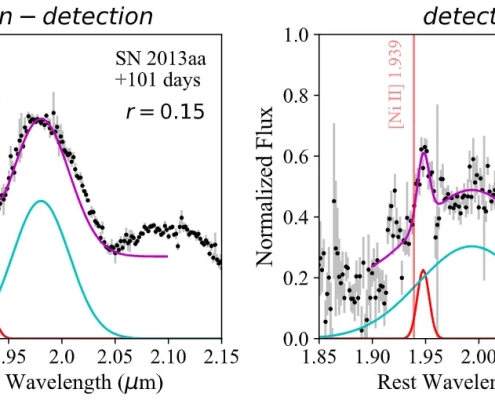
The Search for Stable Nickel: Investigating the Origins of Type Ia Supernovae with Late-time NIR Spectroscopy from the Carnegie Supernova Project-II
Journal, Stars
S. Kumar et al., 2025; CASSA affiliation through SA Uddin.
Abstract: Producing stable $^{58}$Ni in Type Ia supernovae (SNe Ia) requires sufficiently high density conditions that are not predicted for all origin scenarios, so examining the…
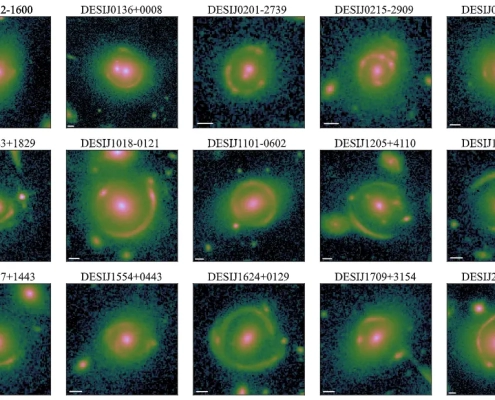
Investigating the relation between environment and internal structure of massive elliptical galaxies using strong lensing
Galaxies, Journal
Abstract: Strong lensing directly probes the internal structure of the lensing galaxies. In this paper, we investigate the relation between the internal structure of massive elliptical galaxies and their environment using a sample of 15 strong…

Analyzing type Ia supernovae near-infrared light curves with Principal Component Analysis
Journal, Stars
Abstract: Type Ia supernovae (SNeIa), the thermonuclear explosions of C/O white dwarf stars in binary systems, are phenomena that remain poorly understood. The complexity of their progenitor systems, explosion physics and intrinsic diversity…
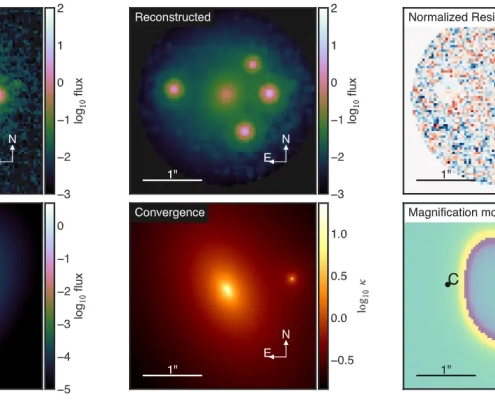
dolphin: A fully automated forward modeling pipeline powered by artificial intelligence for galaxy-scale strong lenses
Galaxies, Journal
Abstract: Strong gravitational lensing is a powerful tool for probing the internal structure and evolution of galaxies, the nature of dark matter, and the expansion history of the Universe, among many other scientific applications. For almost…
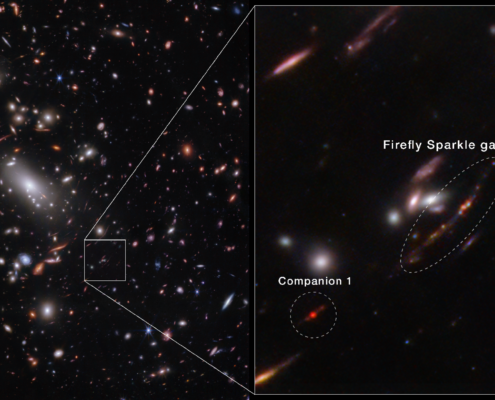 NASA, ESA, CSA, STScI, Chris Willott (National Research Council Canada), Lamiya Mowla (Wellesley College), Kartheik Iyer (Columbia University)
NASA, ESA, CSA, STScI, Chris Willott (National Research Council Canada), Lamiya Mowla (Wellesley College), Kartheik Iyer (Columbia University)Formation of a low-mass galaxy from star clusters in a 600-million-year-old Universe
JournalNASA, ESA, CSA, STScI, Chris Willott (National Research Council Canada), Lamiya Mowla (Wellesley College), Kartheik Iyer (Columbia University).
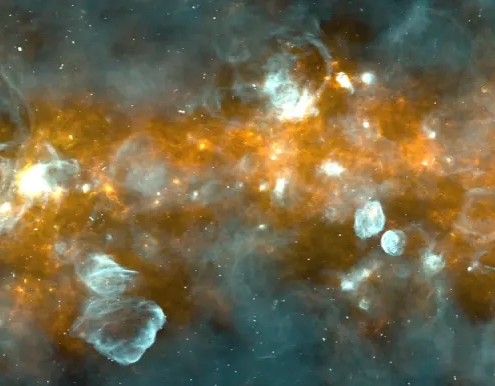
The SARAO MeerKAT 1.3 GHz Galactic Plane Survey
Journal, Large-scale structure, Stars
We present the SARAO MeerKAT Galactic Plane Survey (SMGPS), a 1.3 GHz continuum survey of almost half of the Galactic Plane ($251^\circ \le l \le 358^\circ$ and $2^\circ \le l \le 61^\circ$ at $|b| \le 1.5^\circ$). SMGPS is the…
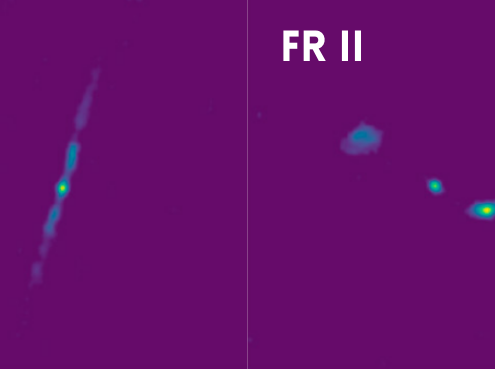
Morphological classification of Radio Galaxies using Semi-Supervised Group Equivariant CNNs
Conference, Cosmic web and void, Journal, Stars
Out of the estimated few trillion galaxies, only around a million have been detected through radio frequencies, and only a tiny fraction, approximately a thousand, have been manually classified. We have addressed this disparity between labeled…
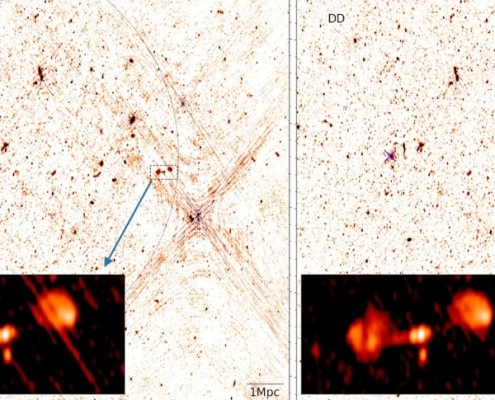
Mining mini-halos with MeerKAT I. Calibration and imaging
Journal, Large-scale structure, Stars
Radio mini-halos are clouds of diffuse, low-surface brightness synchrotron emission that surround the Brightest Cluster Galaxy (BCG) in massive cool-core galaxy clusters. In this paper, we use third generation calibration (3GC), also called…
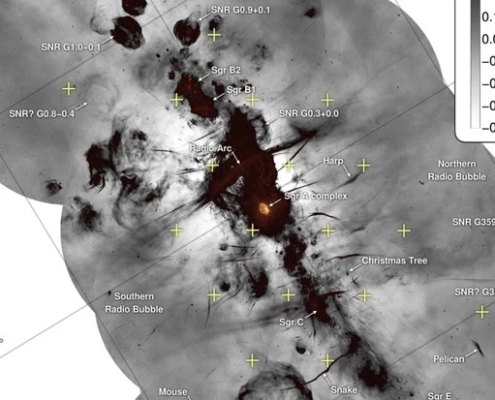
The 1.28 GHz MeerKAT Galactic Center Mosaic
Journal, Large-scale structure, Stars
The inner $\sim 200$ pc region of the Galaxy contains a 4 million $M_\odot$ supermassive black hole (SMBH), significant quantities of molecular gas, and star formation and cosmic-ray energy densities that are roughly two orders of magnitude…
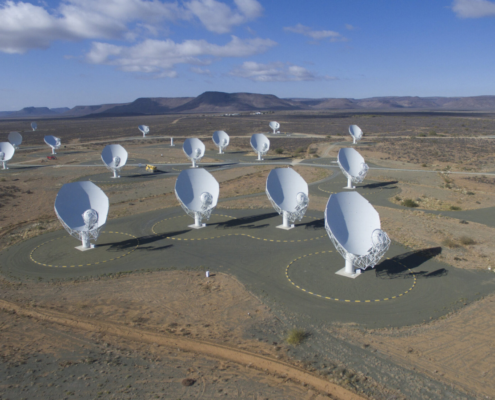
Primary beam effects of radio astronomy antennas – II. Modelling MeerKAT L-band beams
Journal, Large-scale structure
After a decade of design and construction, South Africa’s SKA-MID precursor MeerKAT has begun its science operations. To make full use of the widefield capability of the array, it is imperative that we have an accurate model of the primary…
